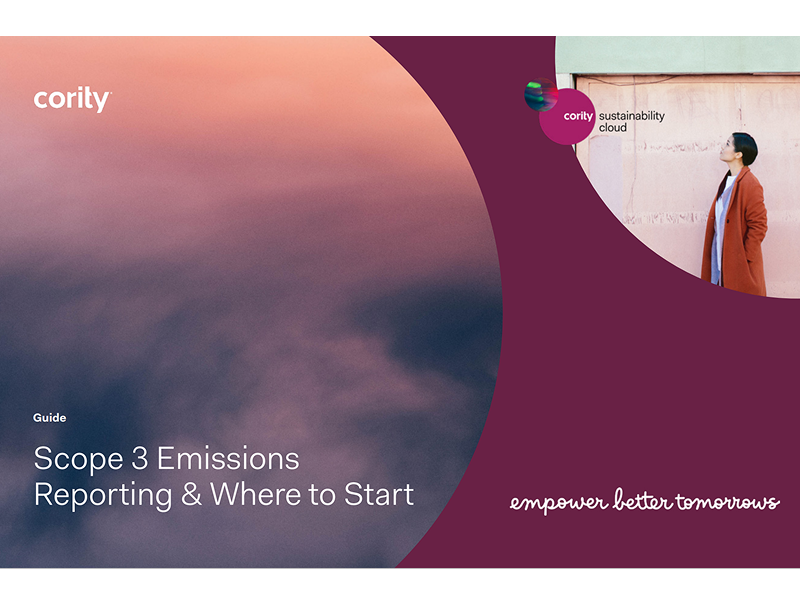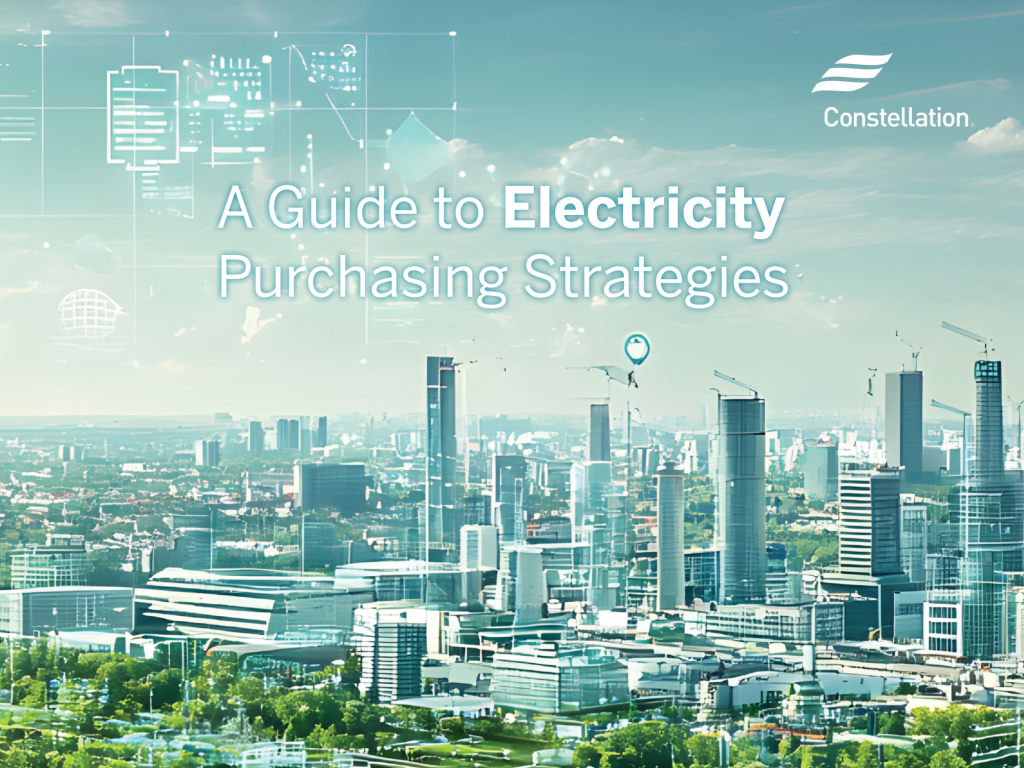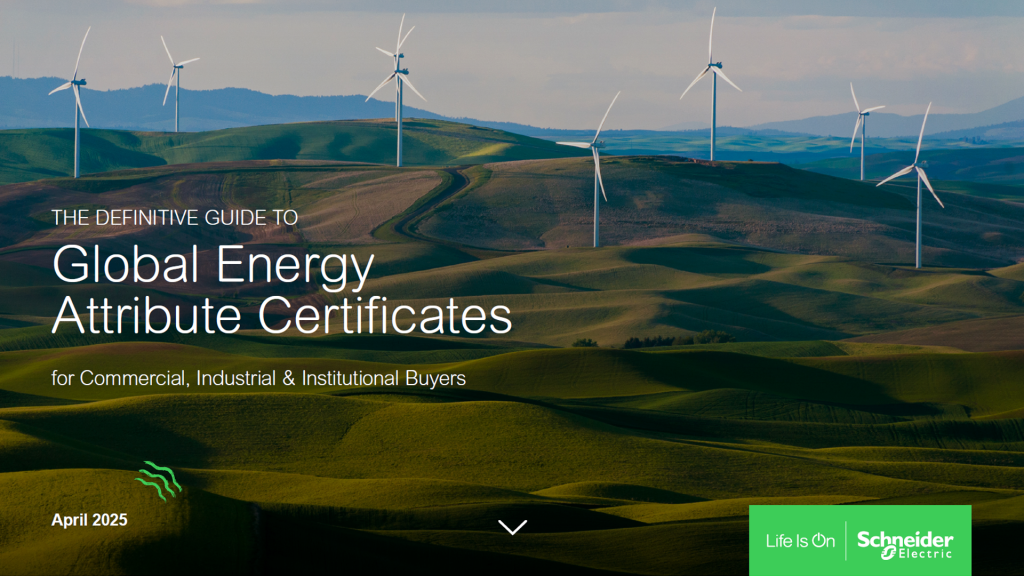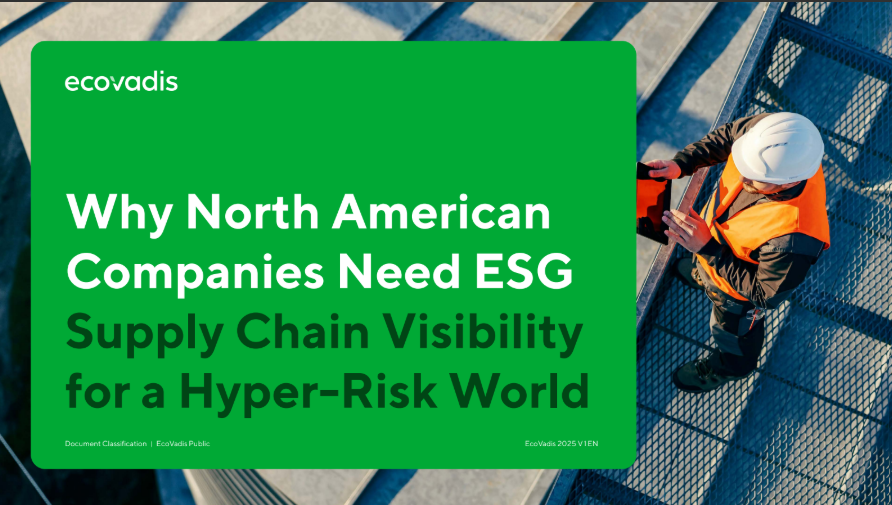Sustainable Sites Backgrounder
The Big Picture
Development and construction projects are often destructive to local ecology. For example, stormwater runoff from developed areas can impact the quality of receiving waters, hinder navigation and recreation, and disrupt aquatic life. Site clearing and earth moving during construction often results in significant erosion problems because adequate environmental protection strategies are not employed. In addition, development activities may encroach on productive agricultural land areas and open space. Fortunately, steps can be taken to reduce impacts on previously undeveloped lands and to improve previously contaminated sites.
Brownfields — abandoned, idled, or underutilized industrial and commercial sites where expansion or redevelopment is complicated by real or perceived toxic contamination — are gaining attention as potential development sites. For companies whose portfolio contains one or more of these apparent white elephants — many located in urban cores, near rivers, rail hubs, and interstate highways — there is new hope for turning them into productive assets. Though they present challenges, these environmental millstones may offer competitive advantages and benefits for firms seeking to acquire or relocate sites.
Site selection is the basis of site design and affects all aspects of the site, including transportation amenities, natural areas, stormwater management, amount of impervious surfaces, and site lighting requirements. Water supply and management issues, especially landscape irrigation and stormwater reuse, are dependent on project location. Opportunities to increase the building’s energy performance can be realized by locating the project in areas where natural ventilation and solar gains can be managed and based on the angles and location of the sun. The local climate and marketplace should influence choices of materials. Natural ventilation and daylight can benefit indoor environmental quality.
As non-urban development has increased, the importance of prudent site selection has increased as well. The best strategy for selecting a building site is to choose a previously developed site. Since these sites have already been disturbed, damage to the environment is limited and sensitive land areas can be preserved.
Context
Increasingly, land developers are recognizing the long-term financial benefits of selecting sustainable sites for their projects. These range from access to money-saving building technologies to potential long-term savings associated with locating near transit and other existing infrastructure.
Also in recent years, government agencies have begun providing incentives and working to remove regulatory and legal barriers and coordinate cleanup and redevelopment efforts among federal and local bureaucracies. More than half the U.S. states have passed legislation or developed policies to ease liability and cleanup requirements for brownfield buyers. Meanwhile, the marketplace is developing its own solutions to encourage brownfield redevelopment.
Getting Down to Business
Companies are just beginning to recognize the potential value of sustainable site solutions. A few examples:
- At the University of California at Santa Barbara’s Donald Bren School of Environmental Science and Management, builders instituted an erosion control plan to prevent contaminated runoff from leaving the site boundary. Construction stormwater controls included temporary silt fencing and straw-bale catch basins. Project specifications and plans included requirements to preserve topsoil and limit site disturbance. During construction, grading activities were scheduled in accordance with weather conditions. Construction materials stored on-site were protected from the elements to prevent contamination of stormwater volumes, and construction workers were informed of the stormwater control program. During building occupancy, stormwater system inspections are scheduled to occur annually, before and after storm events, and weekly to ensure proper operation of stormwater controls.
- Whitehall-Robins Healthcare created hundreds of new jobs in northern Richmond, Va., the result of a collaboration with the city and the U.S. EPA. The city provided a 4.5-acre parcel of municipally-owned land to Whitehall-Robins, Richmond’s 25th-largest private employer, so the company could retain, consolidate, and expand its pharmaceutical research facility. The land was formerly the site of an armory, a use that left the soil contaminated with lead and mercury. Though Whitehall-Robins was interested in the property for years, the site sat idle until a U.S. EPA grant provided the city with environmental consultants to advise on detailed assessment and cleanup techniques. Completed in 1998, Whitehall-Robins’ research center includes office, laboratory, and light industrial areas for 350 employees, including some 250 new jobs.
- The KSBA Architects office building, located in the Lawrenceville section of Pittsburgh, PA, is a rehabilitation project of a building originally constructed in 1888 and is part of a decade-long neighborhood revitalization program involving several local jurisdictions and community planning agencies. The two-story building is located in a neighborhood with a variety of businesses and industries, all within close proximity to downtown Pittsburgh. The location benefits the building occupants by providing a neighborhood that is conducive to walking, eating, entertainment, transportation, and living.
- Quad/Graphics, a Wisconsin-based printer, turned an abandoned manufacturing facility just outside Milwaukee’s depressed urban core into a bustling business center. The company wanted a site that afforded cost-effective distribution capabilities for its other Wisconsin plants. Aided by a state law that allows a company to buy previously used industrial property without assuming liability for undiscovered environmental contamination, Quad rehabilitated enough of the site to open a state-of-the-art, 600,000-square-foot facility. The move gave Quad/Graphics instant access to Milwaukee’s large and available labor pool, but the company was also able to inhabit the new facility faster than if it had built one elsewhere from the ground up—two months, compared to six months for new construction.
Key Players
- Landscape architects, planners, ecologists, environmental engineers and civil engineers, who may provide site-specific expertise in site selection.
- Government officials and other qualified professionals, who can perform a site survey to inventory environmental characteristics, including wetlands, sloped areas, unique habitat areas, and forested areas.
- Manufacturers and related businesses, which view brownfields as potential sites to locate facilities. Other industries include warehouse, distribution facilities, shopping malls, even schools, housing, and recreational facilities.
- Real estate developers and bankers, who stand to profit from site development.
- Regulators, who are both eager to put abandoned sites into productive (tax-generating) use, and who must guard against overzealous development that endangers public health.
- Environmental justice organizations representing low-income communities where many brownfields and urban redevelopment areas are located, which, like regulators, support cleanup of inner-city and rural sites but wish to ensure that the type of redevelopment that takes place will benefit their constituencies through new jobs and improved, healthier communities.
- Members of the community — including building occupants, site neighbors, and the general public — who all have a stake in the site’s environmental impact.
The LEED View
There are 14 credit points available in the Sustainable Sites category.
Prerequisite 1: Erosion & Sedimentation Control. Control erosion to reduce negative impacts on water and air quality.
Credit 1: Site Selection. Avoid development of inappropriate sites and reduce the environmental impact from the location of a building on a site.
Credit 2: Development Density. Channel development to urban areas with existing infrastructure, protect greenfields and preserve habitat and natural resources.
Credit 3: Brownfield Redevelopment. Rehabilitate damaged sites where development is complicated by real or perceived environmental contamination, reducing pressure on undeveloped land.
Credit 4: Alternative Transportation. Reduce pollution and land development impacts from automobile use. Credits are awarded for selecting a site near transit, providing bicycle storage, alternative fuel vehicles, alternative refueling stations, the minimum parking capacity necessary, and providing preferred parking for alternative fuel vehicles and carpool vehicles.
Credit 5: Reduced Site Disturbance. Conserve existing natural areas and restore damaged areas to provide habitat and promote biodiversity.
Credit 6: Stormwater Management. Limit disruption and pollution of natural water flows by managing stormwater runoff. Credits are awarded for limiting, reducing, or treating stormwater runoff.
Credit 7: Heat Island Effect. Reduce heat islands (thermal gradient differences between developed and undeveloped areas) to minimize impact on microclimate and human and wildlife habitat. Credits are awarded for roof and non-roof solutions related to landscape and exterior design.
Credit 8: Light Pollution Reduction. Eliminate light trespass from the building and site, improve night sky access and reduce development impact on nocturnal environments.
The Upside
Minimized risk. Appropriate site selection can reduce the risk of property damage due to natural events such as landslides, floods, sinkholes, and soil erosion. Higher first costs may arise due to site survey and selection activities. Increased property values can offset these costs in the future. Proper site selection can also avoid potential loss of property due to potential litigation resulting from harm to endangered species.
Improved stakeholder relations. While the public often is skeptical of new development, in the case of brownfields communities and governments encourage redevelopment. Benefits may include more cooperative labor relations, positive media coverage, appreciative customers, supportive community groups, and agreeable government agencies.
Financial benefits of green-building technologies. Integrating environmental considerations such as natural daylighting and ventilation from the beginning of the site selection and design process reduces operating costs over the long run.
Reduced costs for redevelopment. Using an existing infrastructure, including buildings and services, can be less expensive than starting from scratch and may cut the time it takes to go from acquisition to occupancy.
Access to labor. Urban redevelopment allows companies ready access to large pools of urban workers. Selecting an appropriate project location can reduce the need for private automobile use and reduce urban sprawl.
Prime locations. Many urban redevelopment areas are on waterfront properties or near rail hubs and convenient to city centers and transportation corridors. The infrastructure to service the development may already be in place.
Tax incentives. Federal and state tax laws are aimed at easing the cleanup burden. For example, the federal government has declared cleanup expenses to be fully deductible for the year in which they are spent. Additional tax breaks may be available for redevelopment in economically depressed urban areas.
Reality Check
Developing toxic industrial sites can be a challenge, one not for the timid. It offers rewards, but also risks. Funding can be a problem, though it is becoming less so. Liability concerns loom large. The uncertainty over cleanup standards—how clean is clean?—can stymie projects. The community can be a barrier, too, if they feel the proposed brownfield development will not benefit local residents’ personal or economic well-being.
Action Plan
When considering site alternatives, it is important to consider environmental criteria throughout the site selection process. The major ecological features of the site should be identified, including site geology, hydrology, vegetation, wildlife, and prior site history. Here are some specific considerations:
- Most successful brownfields projects involve an interdisciplinary team. Such projects can involve analysis of law, engineering, environmental, and real estate matters. Pull together individuals from a variety of parts of the company, supplemented with outside experts, to create a team that will manage a project from beginning to end.
- Bring local politicians and citizens groups into the process at the earliest possible stage. Earnestly solicit their feedback and incorporate them into the plan. Engage both friendly and less-friendly groups to ensure a full range of opinions. When appropriate, enlist local nonprofits as partners in a development project. Communication with these groups can be facilitated through public meetings, design charrettes, and organized comment processes.
- Whenever possible, choose development sites that already exist within an established community.
- Consider the proposed use of the building, and set a preference for previously developed sites that are near complementary uses, thereby reducing associated parking needs and vehicular miles traveled.
- Consider how employees will travel to the site, including the availability of bike and public transit routes.
- Pay attention to the culture and history of the community as well as past uses of the site.
- Research regulations that facilitate green design and financial incentives.
- Consult with national, state, and local authorities about laws regulating development of contaminated sites. Many of the organizations and Web sites described below can serve as good starting points.
- Choose a building footprint and location that minimize disturbance to the existing ecosystem. Design a master plan for the project area, survey existing ecosystems, and identify soil types on the site. Document existing water elements, soil conditions, ecosystems, wildlife corridors, trees and other vegetation, and map all potential natural hazards. Consider the impacts of the proposed development on existing natural and built systems and propose strategies to mitigate negative impacts.
- Choose a building site with access to natural light and shade.
- Investigate the local watershed and where runoff/pollution from construction will flow.
- Shade constructed surfaces (e.g. roof, roads, and sidewalks) on the site with landscape features and minimize the overall building footprint. Consider replacing constructed surfaces with vegetated and/or permeable surfaces such as garden roofs and open grid paving, or specify high-albedo materials to reduce heat absorption.
- Utilize water conservation practices, such as use of rainwater for irrigation.
- Excessive landscaping may require maintenance over time, resulting in additional operation costs. Use of native plants reduces both watering and maintenance requirements.
- Finally, it is also important to minimize project impacts on surrounding areas after construction is complete and the building is occupied. For example, by addressing heat island effects and reducing light pollution on the site, the site can become integrated into its surroundings and serve as a considerate and beneficial neighbor for the lifetime of the building.
Resources
- Natural Resources Defense Council
NRDC uses law, science, and a large membership base for protection of wildlife and wild places to ensure a safe and healthy environment. - Urban Land Institute
The Urban Land Institute is a nonprofit education and research institute that is supported by its members. Its mission is to provide responsible leadership in the use of land in order to enhance the total environment. - Institute for Responsible Management
Supports research and technological development for brownfield remediation. - Turning Brownfields into Greenbacks: Developing and Financing Environment
A guide to developing brownfields into profitable opportunities for other development. - Smart Growth Network
EPA’s partnership of government, business, and civic organizations that support smart growth. - Sustainable Cities Research Institute
Researches strategies for developing cities that are economically efficient, socially integrated, and environmentally friendly. - Funders’ Network for Smart Growth and Livable Communities
Membership organization connects philanthropic foundations with groups seeking to fund smart-growth projects. - Center of Excellence for Sustainable Development
Resources for communities on land-use planning, green building, transportation, economics, industry, and community development. - Green Development: Integrating Ecology and Real Estate
Shows how environmental design and building practices can profitably benefit the real-estate market. - Smart Growth and Urban Sprawl
A wealth of backgrounders and policy papers from the Natural Resources Defense Council.
Bottom Line
As links are made between environmental improvement, economic development, and good social policy, more business decision makers and real estate developers are recognizing the importance of selecting and maintaining sustainable sites. Thoughtful site selection and planning can also allow the developer to integrate unique neighborhood characteristics during project design, thus ensuring a good reception from community stakeholders.









